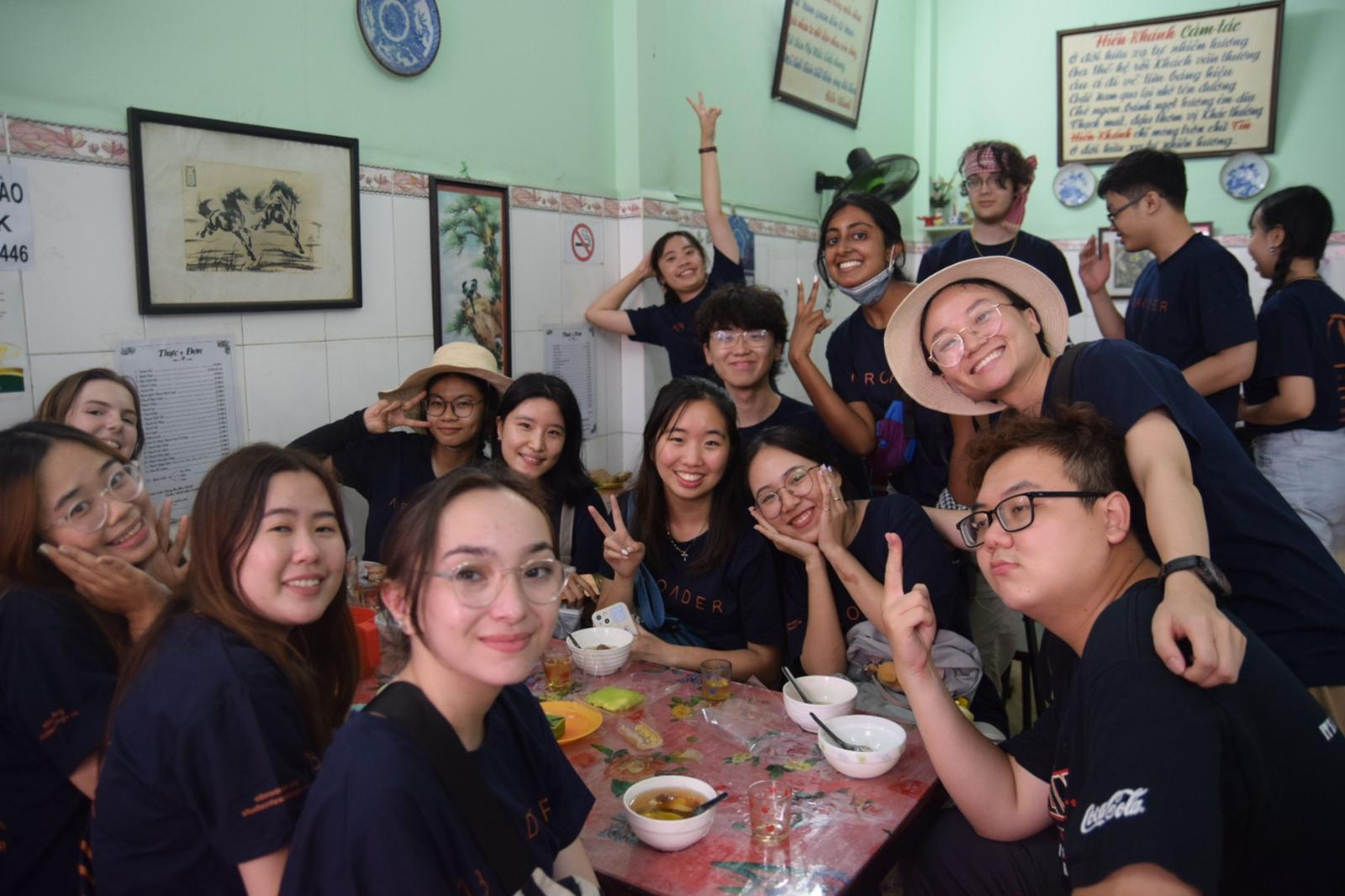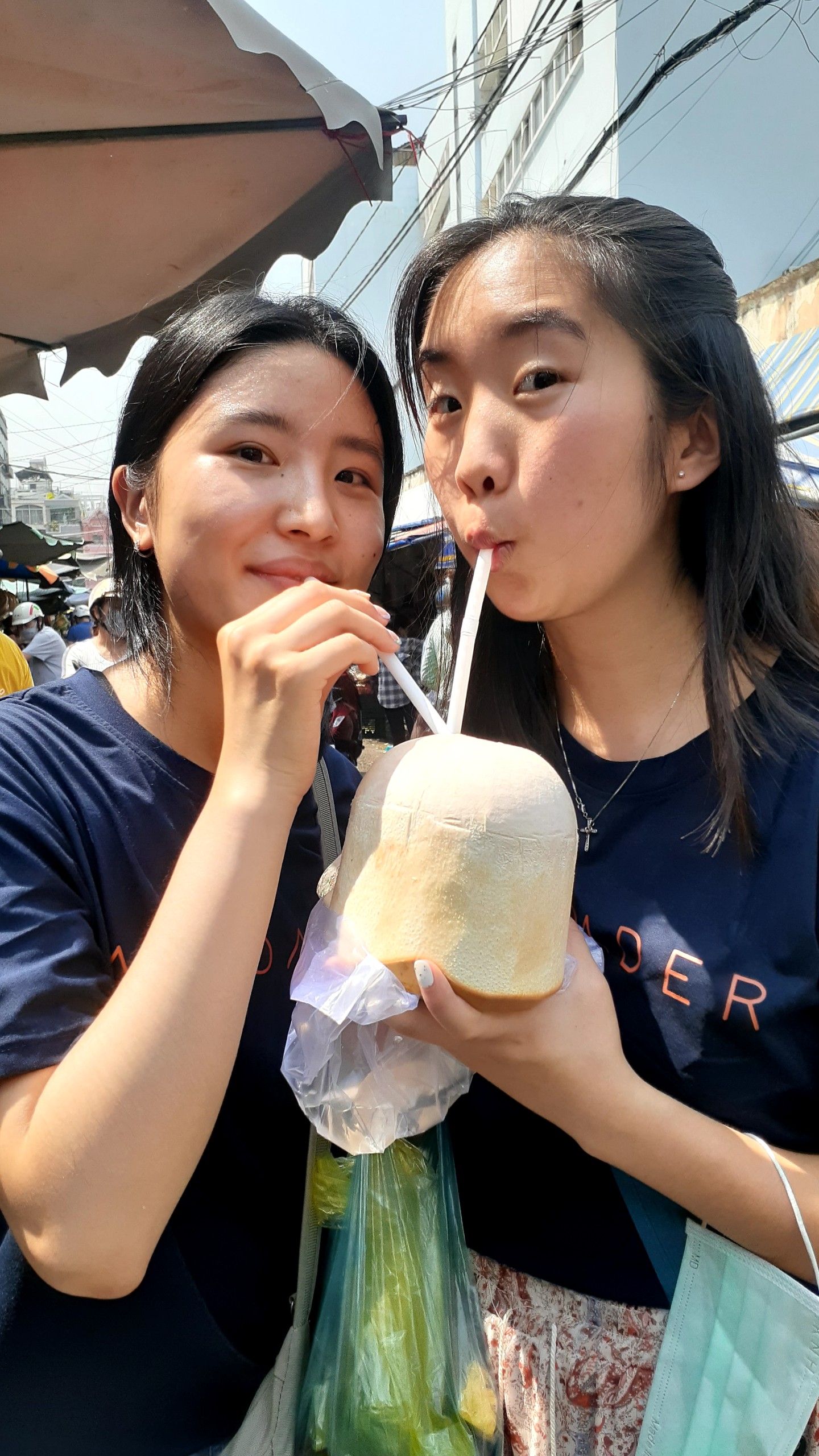Street Market Steals
By: Zoe Lu, SEAS ’25

Zoe and other interns tried Vietnamese dessert (chè).
Environmental Sustainability in Ho Chi Minh City, Vietnam
Coming to Ho Chi Minh City, I was immediately thrown into the busy city life – the throng of motorbikes on the streets, crowded cafes, and bustling nightlife. Despite having two months here, the city seemed impossibly large, and I felt I couldn’t get enough of everything to do and see. I was excited to try everything and explore every corner while I could.
This internship program in Vietnam was set up through ABROADER, a program that connects students abroad to various companies. ABROADER connected me with local buddies and students at nearby universities who immediately helped me feel welcome by showing me around.
After a week of settling in, meeting the other interns, and starting work, I went on a city tour hosted by ABROADER and the local buddies with the other interns in the program. While we toured the Independence Palace, visited the Ho Chi Minh City museum, and tried traditional Vietnamese dessert (chè), the best part of the tour was buying fruit at Tan Dinh Market.
 Tan Dinh Market is one of many street markets in Vietnam overflowing with both people and goods. Each market has its own unique characteristic it’s known for; for example, this market is known for Ao Dai (traditional Vietnamese clothing) fabrics. One part of the market is the “wet market” with stalls selling fresh foods such as meat, fish, and produce along narrow streets, while the other is the “dry market” selling non-perishable goods such as fabrics, souvenirs, and jewelry. After a breakfast of a delicious, incredibly cheap banh mi and fresh, sweet sugarcane juice, we were tasked with the challenge of going to the wet market and buying as many types of tropical fruit as possible with only 100,000 VND (about 4.30 USD).
Tan Dinh Market is one of many street markets in Vietnam overflowing with both people and goods. Each market has its own unique characteristic it’s known for; for example, this market is known for Ao Dai (traditional Vietnamese clothing) fabrics. One part of the market is the “wet market” with stalls selling fresh foods such as meat, fish, and produce along narrow streets, while the other is the “dry market” selling non-perishable goods such as fabrics, souvenirs, and jewelry. After a breakfast of a delicious, incredibly cheap banh mi and fresh, sweet sugarcane juice, we were tasked with the challenge of going to the wet market and buying as many types of tropical fruit as possible with only 100,000 VND (about 4.30 USD).
With a local buddy and another intern, I went all around the wet market, looking at stalls overflowing with colorful fruits of all shapes and sizes. Some of these fruits I had never seen before, such as custard apples and rose apples. Although some stalls have signs with prices for the produce, the expectation at markets like these is to bargain. I was taught that the general rule is to ask for half of the offered price and negotiate until reaching an agreed price. While most of the fruit was sold in large bunches up to 1 kg, we found the trick was to ask for small amounts of each type of fruit (such as 3 mangosteens) and offer a price of around 10,000 VND (about 50 cents). Some of the stall owners wouldn’t sell us such small amounts, but many were quite friendly and open to cutting us a deal. Despite not knowing much Vietnamese, we could use basic phrases, numbers, and hand gestures to communicate. My team ended up getting the most variety of fruits (12 different kinds!) and we spent exactly 100,000 VND.
Overall, it was fun to explore the city with other students, while trying new foods and immersing myself in the local culture. I look forward to learning more about the language and culture and discovering more about the country during the rest of my time here.
The Global Research and Internship Program (GRIP) provides outstanding undergraduate and graduate students the opportunity to intern or conduct research abroad for 8 to 12 weeks over the summer. Participants gain career-enhancing experience and global exposure that is essential in a global workforce.